
The terraced fields covered with clouds all year round in Xuan Truong commune, Bao Lac district (old), now Xuan Truong commune, Cao Bang province, have long been associated with the lives of the Tay, Nung, Mong, and Dao ethnic minorities in the mountains. Local people still affectionately call this sticky rice variety “khau nua hom”, meaning fragrant sticky rice. The glutinous rice grains are plump and ivory white, when cooked, they give off a sweet aroma, are soft and sticky, and when cooled, they remain soft and fragrant for a long time.
Many people say that this glutinous rice variety has been here for a long time, since the ancestors of the elders in the village saw it. Previously, Dong Mu glutinous rice was also picky about soil so it could only be grown on high fields, irrigated by rainwater, so the yield was often very low. The source of the variety was mainly kept by the people themselves from this year to use for the next year. In the area, every family grows this glutinous rice variety but mainly only for family use on holidays, New Year or as gifts for distinguished guests.
This type of sticky rice has large and round grains, hundreds of grains are exactly the same and have a very unique aroma. When milled into rice, the seductive aroma still lingers in each pure white grain. Sticky rice cooked with this rare rice will remain sticky and fragrant for 2-3 days. In particular, sticky rice cooked with fragrant sticky rice will give guests a very distinctive aroma as soon as they pass by.
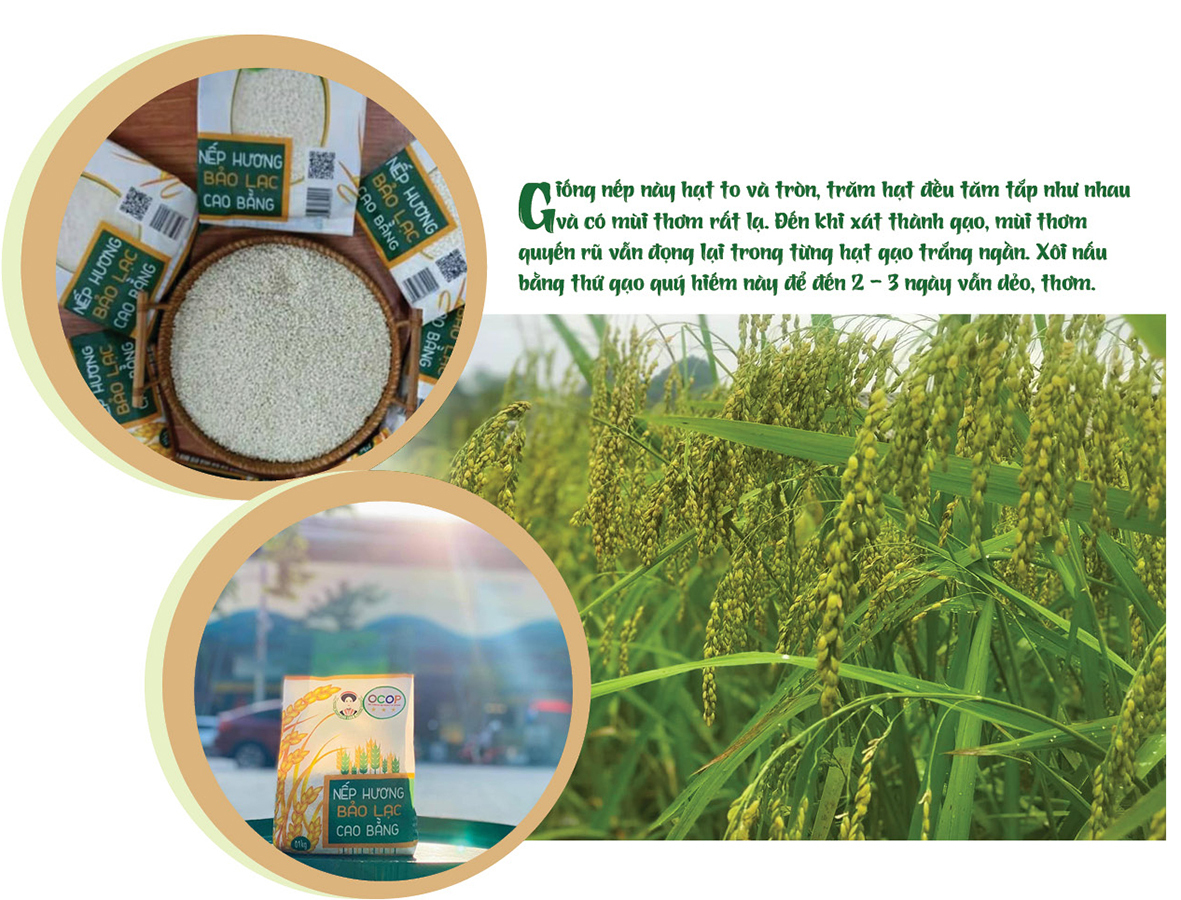
No one remembers exactly when this sticky rice variety first appeared, but it is known that for many generations, the people of Bao Lac have kept the seeds as a treasure. From the fields, the sticky rice seeds have followed the people to the highland markets, becoming a precious gift to give to visitors from far away on holidays and Tet. For them, fragrant sticky rice is not only a food but also a symbol of abundance, solidarity and national pride.
Bao Lac's natural conditions with cool climate, high humidity, clean water source, ancient alluvial soil have created a unique flavor for this type of sticky rice. Compared to other types of sticky rice, Bao Lac fragrant sticky rice has a unique stickiness and aroma. It is this characteristic that makes this rice variety quickly become one of the most typical agricultural products of Cao Bang.
For the people of the mountainous region of Cao Bang, fragrant sticky rice is not only a traditional crop but also a “key economic crop” that helps improve their lives. A farmer in Xuan Truong commune shared that with about 1 hectare of fragrant sticky rice, the family can harvest 4.5-5 tons of rice per crop, bringing in a revenue of nearly 70 million VND, much higher than that of ordinary rice.

Although the yield is not high, in return, fragrant sticky rice always has a stable selling price and is sought after by traders. Sticky rice is consumed in many provinces and large cities such as Hanoi, Bac Ninh, Hai Phong, and has even become a specialty sought after by tourists.
Not only does it bring economic benefits, fragrant sticky rice also contributes to maintaining traditional farming customs and practices. Many households have combined fragrant sticky rice growing with community tourism, so that visitors can experience harvesting rice, pounding green rice, and cooking sticky rice – both promoting the product and increasing income.
Bao Lac fragrant sticky rice is also a testament to the effectiveness of agricultural development associated with cultural preservation. Ethnic people not only preserve precious varieties but also learn how to grow organically, using less chemicals and being environmentally friendly. This is a sustainable direction, helping people to both practice clean agriculture and build their own brand for their homeland.

Realizing the potential of the precious glutinous rice variety, in recent years, the Bao Lac district government and specialized agencies of Cao Bang province have focused on preserving, restoring and developing the fragrant glutinous rice growing area. In 2014, the project to research and restore the Bao Lac fragrant glutinous rice variety was implemented, helping to improve the quality and maintain a stable source of varieties.
By 2018, a model of linking the production of fragrant sticky rice was built, connecting farmers with cooperatives and businesses. Units that purchase products have provided technical support, supplied quality seeds, and committed to purchasing stable output for farmers.
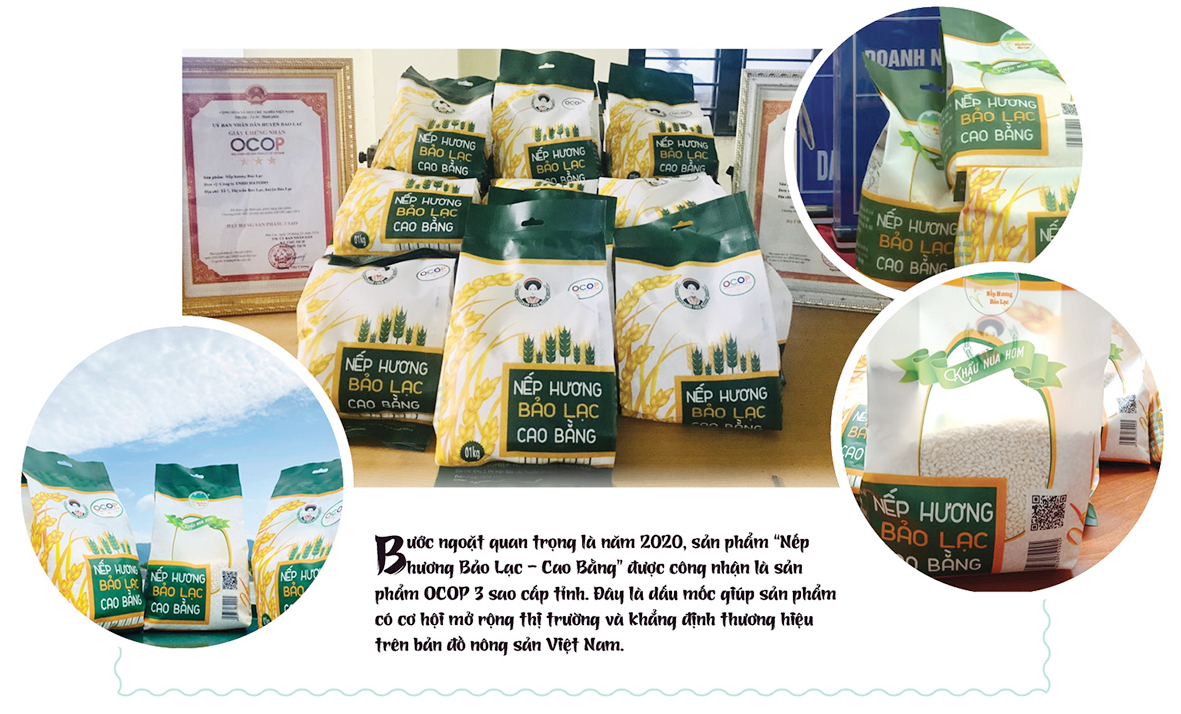
The important turning point was in 2020, the product “Bao Lac – Cao Bang fragrant sticky rice” was recognized as a 3-star OCOP product at the provincial level. This is a milestone that helps the product have the opportunity to expand the market and affirm its brand on the map of Vietnamese agricultural products. At the same time, the collective trademark “Bao Lac fragrant sticky rice” was registered for protection, contributing to preventing counterfeiting and imitation, protecting the reputation of growers.
Since the brand was established, many cooperatives and households have invested in milling, packaging and labeling systems for traceability. The product packaging is beautifully designed, imbued with the cultural identity of the highlands. That is what makes Bao Lac fragrant sticky rice not only a local agricultural product but also a delicate gift, expressing the appreciation of the land and the efforts of the people of the highlands.
Despite many achievements, Bao Lac fragrant sticky rice still faces many difficulties. This rice variety is picky about soil and water, and is only suitable for some highland communes such as Xuan Truong, Khanh Xuan, and Phan Thanh. Therefore, the planting area cannot be expanded massively.
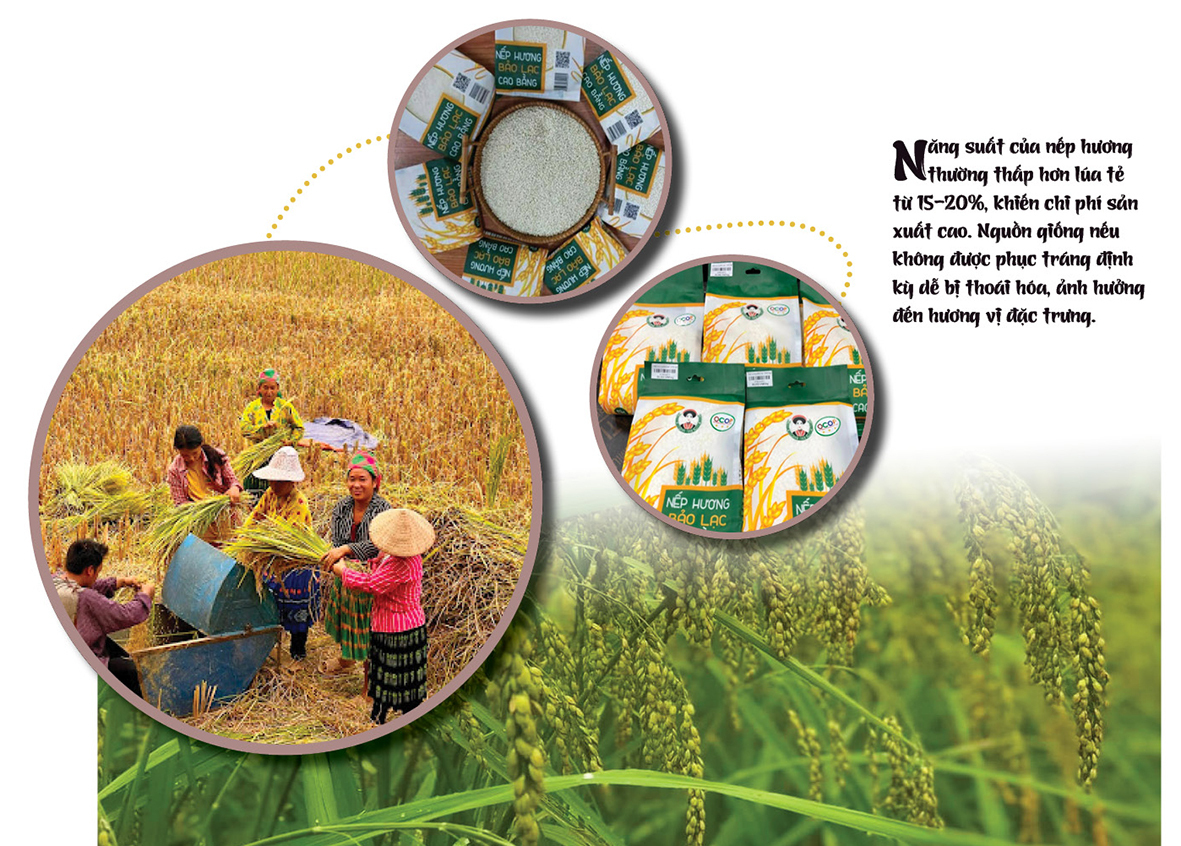
In addition, the yield of fragrant sticky rice is often 15-20% lower than that of ordinary rice, making production costs high. If the seed source is not periodically restored, it is prone to degeneration, affecting the characteristic flavor. In addition, consumption still mainly depends on small traders, without a systematic distribution system.
Another difficulty is the small, fragmented scale of production. Many farmers have not paid attention to ensuring consistent quality, making it impossible for their products to meet the requirements of supermarket chains or exports. Although packaging, labeling, and branding have improved, there is still a lack of consistency between production groups.
However, these challenges also open up opportunities for Cao Bang's agricultural sector to innovate its thinking, aiming to develop specialty agricultural products associated with technology, markets and experiential tourism.

For Bao Lac fragrant sticky rice to truly become a "golden grain" in the agricultural economic structure of the highlands, there needs to be synchronous coordination from many sides: the state, businesses and people.
Firstly, planning concentrated production areas. It is necessary to clearly identify areas with suitable soil and climate conditions for growing fragrant sticky rice. Planning specialized areas will help ensure consistent quality, facilitate origin control and brand building.
Second, the application of science and technology. It is necessary to promote the restoration and propagation of pure fragrant sticky rice, apply organic farming processes, save water and protect the environment. Cooperatives need to be trained in planting, harvesting, preserving and post-harvest processing techniques to preserve the characteristic flavor.
Third, promote value chain linkages. Enterprises, cooperatives and farmers need to closely connect and build a model of “four-party linkage” – the State, scientists, entrepreneurs and farmers. Enterprises play the role of underwriters and producers, guiding the production process; people focus on cultivation, ensuring quality; the government supports infrastructure, capital and trade promotion.
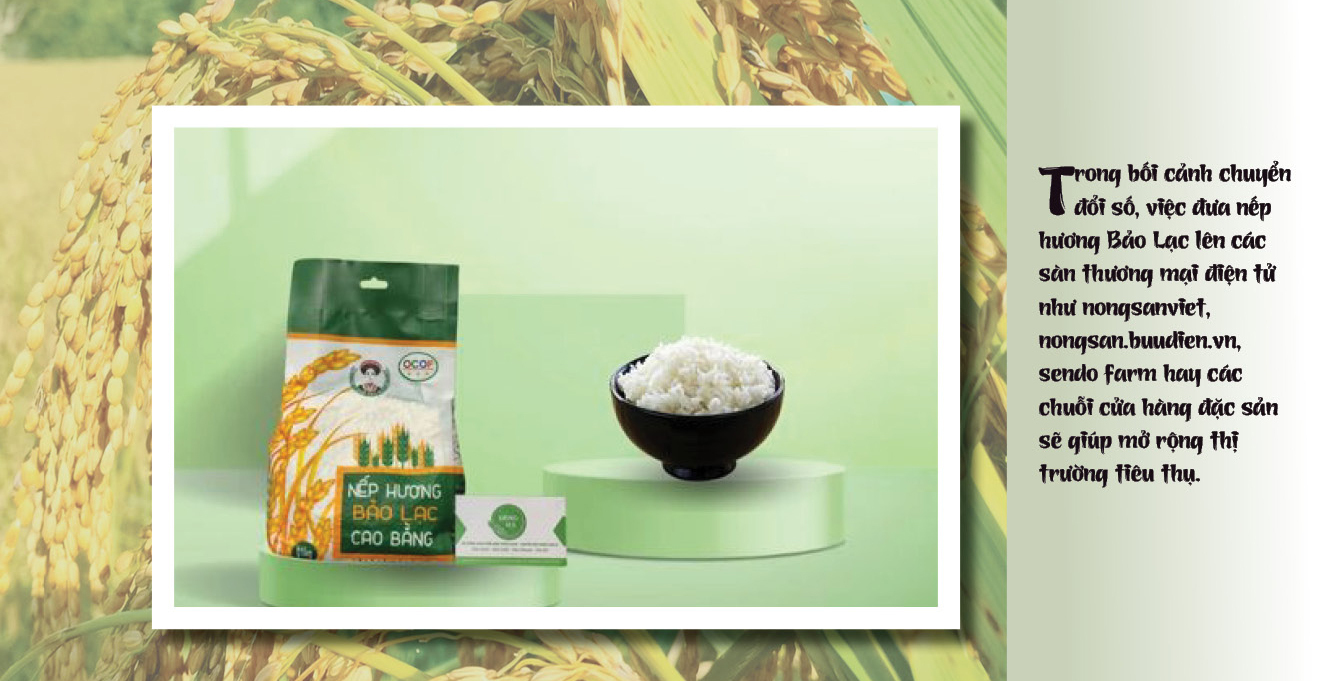
Fourth, market development and e-commerce. In the context of digital transformation, putting Bao Lac fragrant sticky rice on e-commerce platforms such as nongsanviet, nongsan.buudien.vn, sendo farm or specialty store chains will help expand the consumption market. Promotional campaigns and livestreams to introduce products also need to be deployed to spread the value of highland specialties.
Fifth, diversify processed products. From fragrant sticky rice, it is possible to develop more value-added products such as banh chung, banh day, packaged sticky rice, fragrant sticky rice wine, green rice flakes, and sticky rice tea. Deep processing not only helps to prolong the preservation time but also increases the value of the product.
Finally, combine fragrant sticky rice with community tourism. Fragrant sticky rice can become a highlight in experiential tourism programs, where tourists can visit sticky rice fields, harvest, pound green rice, and cook sticky rice with locals. This is a way to both promote the product and increase income for people in the highlands.
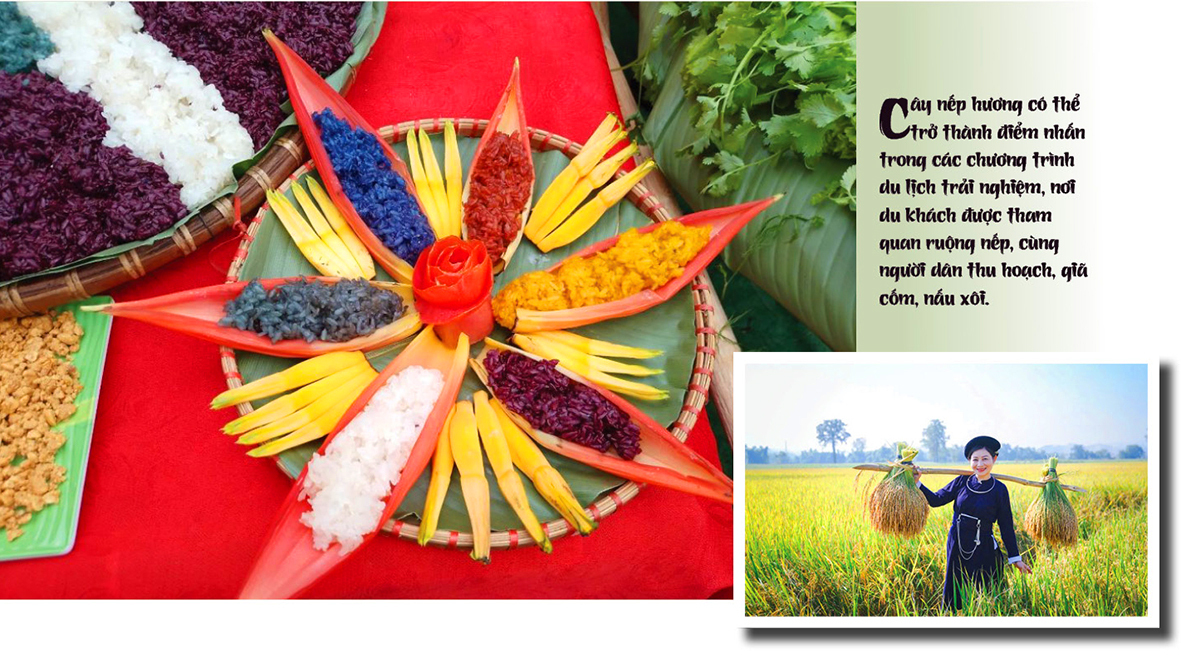
Bao Lac fragrant sticky rice is not only a simple agricultural product, but also the crystallization of nature, culture and the hard-working hands of ethnic people. Preserving the precious sticky rice breed means preserving a part of the soul of the Cao Bang mountains and rivers.
When highland agricultural products are associated with cultural stories, when growers become brand owners, when the market expands thanks to technology and tourism, Bao Lac fragrant sticky rice can completely reach far, become a national brand, contributing to improving income and position for highland people.
Amidst the early morning mist lingering on Xuan Truong fields, the sweet aroma of new sticky rice still spreads, like a reminder of a land that is changing every day, where small sticky rice grains are writing a big story about sustainable agricultural development and pride in Vietnamese identity.
Source: https://congthuong.vn/longform-nep-huong-bao-lac-hat-vang-mien-nui-cao-bang-427090.html



![[Photo] Prime Minister Pham Minh Chinh and United Nations Secretary-General Antonio Guterres attend the Press Conference of the Hanoi Convention Signing Ceremony](https://vphoto.vietnam.vn/thumb/1200x675/vietnam/resource/IMAGE/2025/10/25/1761391413866_conguoctt-jpg.webp)

![[Photo] National Assembly Chairman Tran Thanh Man receives United Nations Secretary-General Antonio Guterres](https://vphoto.vietnam.vn/thumb/1200x675/vietnam/resource/IMAGE/2025/10/25/1761390815792_ctqh-jpg.webp)
![[Photo] Prime Minister Pham Minh Chinh receives United Nations Secretary-General Antonio Guterres](https://vphoto.vietnam.vn/thumb/1200x675/vietnam/resource/IMAGE/2025/10/25/1761390212729_dsc-1484-jpg.webp)





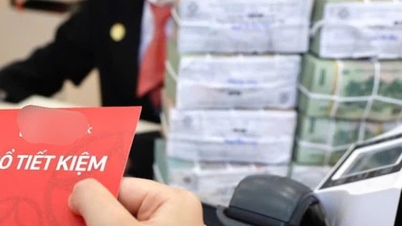


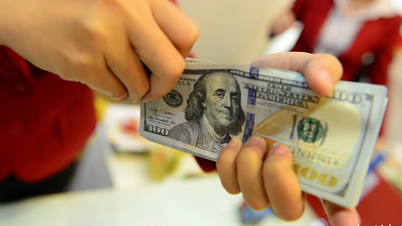

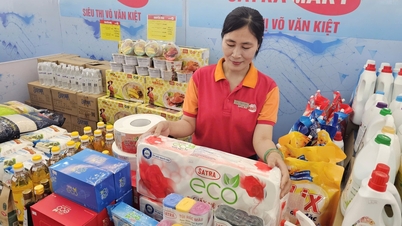




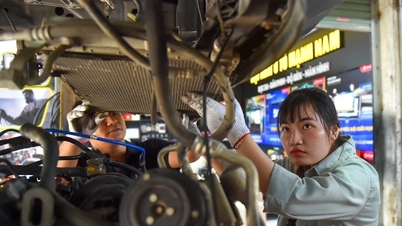
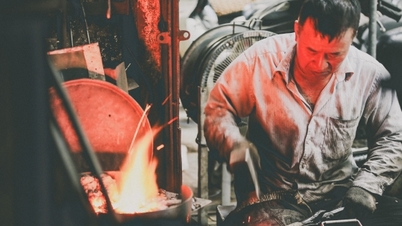
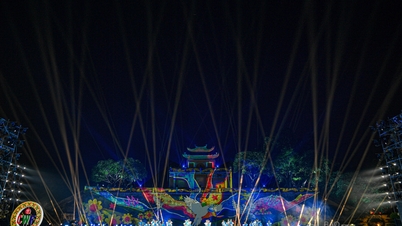


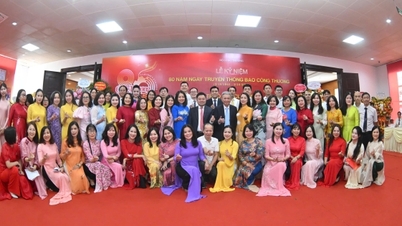

![[Photo] General Secretary To Lam meets with General Secretary and President of Laos Thongloun Sisoulith](https://vphoto.vietnam.vn/thumb/1200x675/vietnam/resource/IMAGE/2025/10/25/1761380913135_a1-bnd-4751-1374-7632-jpg.webp)













































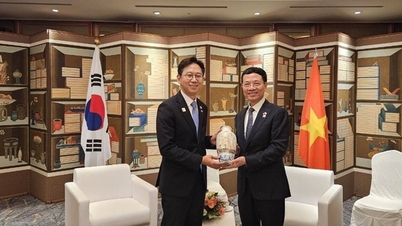

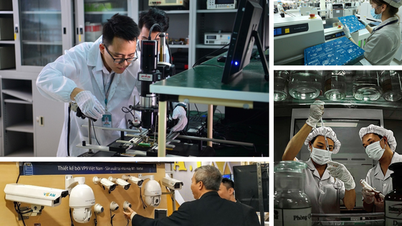








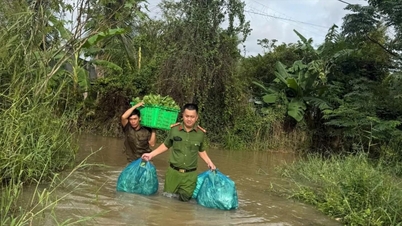

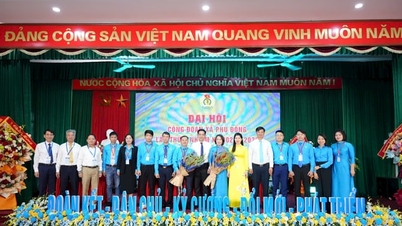


















Comment (0)